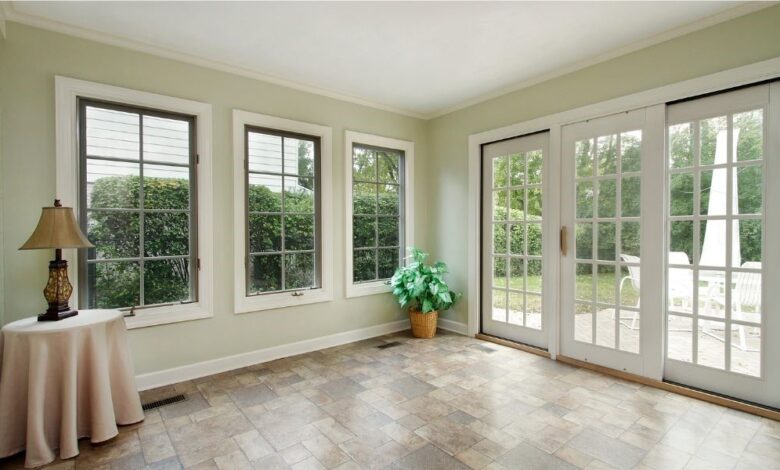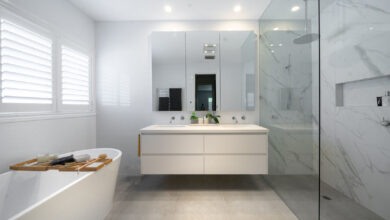The Complete Guide to Modern Window Upgrades: Improving Comfort, Efficiency, and Home Value

Windows are among the most important components of any building. They influence the aesthetics, security, insulation, and overall comfort of a home. Over time, however, even the best windows can wear down due to exposure to the elements, daily use, and shifting architectural needs. That’s where window replacement becomes not just a home improvement project, but a necessity for many homeowners seeking better performance and value.
This comprehensive guide explores everything you need to know about upgrading your windows—from recognizing signs that it’s time for a replacement to understanding materials, styles, costs, energy efficiency benefits, and long-term value. Whether you’re renovating an older property or modernizing your current space, this article will help you make informed decisions.
Why Windows Matter More Than You Think
Most people overlook their windows until they start causing problems. Drafts, condensation, noise, or even increased energy bills are just a few signs that your windows may not be doing their job. But windows are more than just glass panels—they are critical components of your home’s envelope.
A well-designed and properly installed window can:
- Enhance curb appeal and increase home value
- Improve natural lighting and indoor air quality
- Offer better temperature control and reduce HVAC usage
- Provide noise reduction from outside disturbances
- Increase security with modern locking systems and materials
Because of these important roles, taking your time to evaluate and consider a window replacement project is not just a cosmetic upgrade—it’s a long-term investment in your home’s performance.
Signs It’s Time to Replace Your Windows
Many homeowners wrestle with the question: repair or replace? In some cases, repairs may suffice—replacing weather stripping or repainting wooden frames might do the trick. However, there are several warning signs that suggest a full window replacement may be the better route:
1. Increased Energy Bills
If you’ve noticed a spike in heating or cooling costs, your windows could be to blame. Drafts, poor insulation, and outdated single-pane glass can all contribute to energy loss.
2. Difficulty Operating
Windows should open and close easily. If they stick, jam, or require too much effort, it could be due to warped frames or balance issues.
3. Condensation or Fogging Between Panes
This typically indicates that the window seal has failed, allowing moisture to enter the space between double or triple-pane windows.
4. Outside Noise
If your windows let in too much noise, they likely lack proper insulation or aren’t adequately sealed. Modern soundproofing windows can significantly reduce this issue.
5. Visible Damage or Decay
Rotting wood, rusting metal, or cracking vinyl frames signal it’s time for a replacement. Structural damage not only affects aesthetics but also impacts the integrity of your home.
Exploring Window Types and Materials
Choosing the right window means understanding both form and function. Modern window options come in a variety of styles and materials to match architectural design, climate needs, and budget.
Popular Window Styles
- Double-Hung Windows: Both the upper and lower sashes move, making them easy to clean and ventilate.
- Casement Windows: Hinged on the side and open outward, these offer excellent ventilation and energy efficiency.
- Sliding Windows: These windows slide horizontally and are ideal for wide openings.
- Awning Windows: Hinged at the top and open outward, they provide ventilation even during rain.
- Picture Windows: Fixed windows that don’t open, ideal for letting in light and framing outdoor views.
- Bay and Bow Windows: These extend outward from the home, creating additional interior space and great views.
Window Frame Materials
- Vinyl: Affordable, low-maintenance, and energy-efficient. Ideal for most climates and budgets.
- Wood: Offers a classic appearance and excellent insulation but requires more upkeep.
- Aluminum: Durable and slim-framed, often used in modern or industrial designs but less energy-efficient.
- Fiberglass: Strong, weather-resistant, and energy-efficient—typically priced higher than vinyl.
- Composite: Combines materials (like wood and plastic) for durability and low maintenance.
The Energy Efficiency Factor
One of the strongest motivators for a window replacement project is the promise of better energy efficiency. Older windows are notorious for allowing drafts, leaking heat, and lacking insulation. Energy-efficient windows solve these problems with modern technologies such as:
- Double or Triple Pane Glass: Extra layers of glass improve insulation and reduce heat transfer.
- Low-E Coatings: Reflect infrared light, keeping heat inside in winter and outside in summer.
- Gas Fills: Argon or krypton gases between panes offer superior insulation.
- Quality Seals and Frames: Prevent air leaks and moisture intrusion.
When shopping, look for certifications like ENERGY STAR® which indicate compliance with strict energy efficiency guidelines.
Understanding Costs and ROI
While window replacement can be a significant upfront investment, it often pays off in terms of energy savings, increased property value, and comfort. Costs vary based on material, window size, glazing, and labor.
Estimated Cost Range
- Basic Vinyl Window: $300–$700 per window
- Wood Frame Window: $600–$1,200
- Fiberglass or Composite: $800–$1,500+
- Bay or Bow Windows: $2,000–$5,000+
Labor and installation can add $100–$400 per window, depending on your region and project complexity.
Return on Investment
According to industry reports, homeowners can recoup 70–80% of their window replacement cost at resale. Beyond that, the reduction in heating and cooling bills—sometimes up to 30%—can bring noticeable savings each year.
Choosing the Right Contractor
The performance of even the highest-quality windows depends on proper installation. Poorly installed windows can lead to leaks, drafts, and structural issues. To ensure success:
- Get Multiple Quotes: Compare prices, timelines, and offerings.
- Check Credentials: Look for licenses, insurance, and bonding.
- Read Reviews: Past customer experiences offer insight into professionalism and reliability.
- Ask About Warranties: Reputable companies offer warranties on both products and workmanship.
DIY vs. Professional Installation
If you’re particularly handy, you might be tempted to replace windows yourself. While DIY installation can save money, it’s not without risks. Improper installation can void warranties, reduce energy efficiency, or lead to moisture damage. Most homeowners find that hiring a professional ensures peace of mind and lasting results.
Maintenance Tips for Longevity
After your new windows are installed, keeping them in good condition is simple if done regularly:
- Clean Glass and Frames: Use non-abrasive cleaners to prevent scratches or residue build-up.
- Lubricate Moving Parts: Ensure smooth operation of sashes and locks.
- Inspect Seals and Caulking: Reapply sealant if gaps or cracks appear.
- Check for Condensation: Persistent moisture may indicate a seal failure and require attention.
The Future of Windows: Smart and Sustainable
Window technology continues to evolve. Smart windows that automatically tint in response to sunlight, integrated window sensors for security, and advanced sustainable materials are just a few innovations gaining traction.
Homeowners interested in future-proofing their homes should consider these developments when planning their next window replacement project.
Conclusion
Window replacement is more than just a visual upgrade—it’s a strategic investment in your home’s efficiency, security, comfort, and long-term value. With the right materials, proper installation, and regular maintenance, new windows can transform your living space while reducing energy costs and improving quality of life.
By understanding the key signs of deterioration, exploring modern options, and working with skilled professionals, homeowners can ensure that their investment stands the test of time. Whether driven by aesthetics, performance, or both, the right window replacement can bring light, comfort, and value into your home for years to come.



